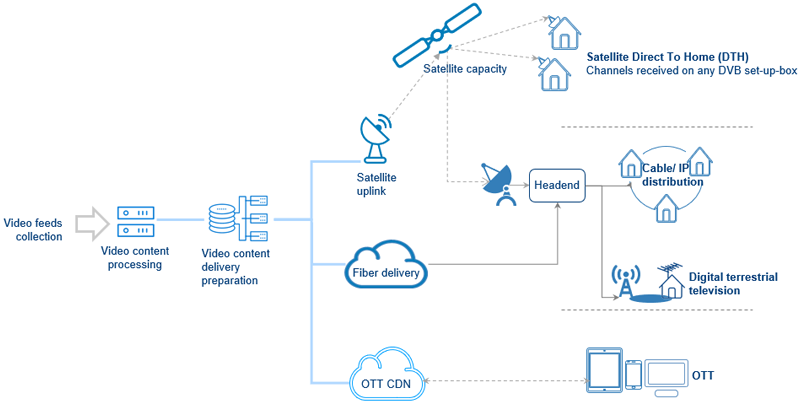Some Ideas on Apollo Group Tv You Need To Know
Some Ideas on Apollo Group Tv You Need To Know
Blog Article
About Apollo Group Tv
Table of ContentsRumored Buzz on Apollo Group TvThe 9-Minute Rule for Apollo Group TvThe Greatest Guide To Apollo Group TvApollo Group Tv Fundamentals Explained
In this situation, instead of having three-minute industrial places during a 30-minute television program, TV programming might alter to one where a consumer will be required to have a regular monthly membership, to ensure that they cen view targeted banner ads. This kind of advertising already takes place on the web, and the amount of information tv firms collect allows them to do a lot the exact same.Define the significant patterns among the broadcasting and cable networks. Popular radio shows such as police dramatization Dragnet and western cowboy collection Gunsmoke were adapted for television, and new TV shows were funded by single marketers, just as radio programs had been.
Today, the television industry is even more complicated. Programs are sponsored by several advertisers; programming is regulated by major media empires; and the 3 major networks no more control the airwaves but rather share their audiences with various cable networks. A number of elements make up these patterns within the industry, including technical advancements, government laws, and the development of new networks.

The 20-Second Trick For Apollo Group Tv
Even public television has actually become subject to the influence of marketing. Established in 1969, (PBS) developed out of a report by the Carnegie Compensation on Educational Television, which checked out the duty of educational, noncommercial tv on culture. The record suggested that the government finance public tv in order to supply variety of programs during the network eraa service produced "not to market items" however to "boost citizenship and public solution (McCauley, 2003)." Public television was additionally intended to supply universal accessibility to tv for visitors in country locations or customers who can not pay for to spend for personal television solutions.
The duration in between 1950 and 1970 is historically recognized as the. Other than a tiny section of airtime controlled by public tv, the three major networks (understood as the Big 3) dominated the tv sector, collectively making up greater than 95 percent of prime-time viewing. In 1986, Rupert Murdoch, the head of international business News Corp, launched the Fox network, challenging the supremacy of the Big 3.
Targeting young and minority audiences with programs such as Buffy the Vampire Slayer, Moesha, Dawson's Creek, and The Wayans Bros., the brand-new networks intended to draw terminals away from their old network associations. Instead than repeating the success of Fox, UPN and WB struggled to make an effect. Unable to draw in numerous associate terminals, the 2 recently established networks got to fewer families than their bigger opponents due to the fact that they were inaccessible in some smaller cities.
This decision led the way for the growth of cord film channels, adding to the exponential development of cable in the 1980s and 1990s. apollo group tv app. Further deregulation of cable in the 1984 Wire Communications Plan Act got rid of limitations on cable television rates, making it possible for drivers to charge what they wanted for cord solutions as long as there was effective competition to the solution (a criterion that over 90 percent of all cord markets can meet)
Getting The Apollo Group Tv To Work

Having created the first "superstation," Turner expanded his world by establishing 24-hour news network CNN in 1980. At the end of the year, 28 national shows services were readily available, and the cable change had actually started. Over the following years, the industry went through a period of quick growth and popularity, and by 1994 audiences could pick from 94 fundamental and 20 costs wire solutions.
Figure 9 - https://www.huntingnet.com/forum/members/apollogtv01.html.16 Enhanced competitors from cord channels has triggered a steady decline in the networks' audience rankings. During the 1950s, the price of producing a single television program enhanced as programs became much longer and production costs rose. Sponsorship on network tv moved from solitary sponsorship, in which a program was entirely supported and created by one advertiser, to multiple sponsorship, in which advertisers got 1- or 2-minute spots on the show
Each feedback must be a click to read more minimum of one paragraph. Choose among the Big 4 networks and print out its weekly programs routine. See the network's prime-time programs over the course of a week, noting the target group for each program. Observe the advertising and marketing enrollers that sustain each program and contrast how the products and services fit with the designated audience.
What Does Apollo Group Tv Mean?

Linear television, frequently described as standard broadcast TV, encompasses cable television and satellite tv. It's called "linear" because content complies with an established programs schedule, unlike on-demand web content which the individual viewer chooses to watch based on their own choices and timetable. When you ask, "What is direct TV?", think about it as the traditional method of watching TV that has been around for decades.
Report this page